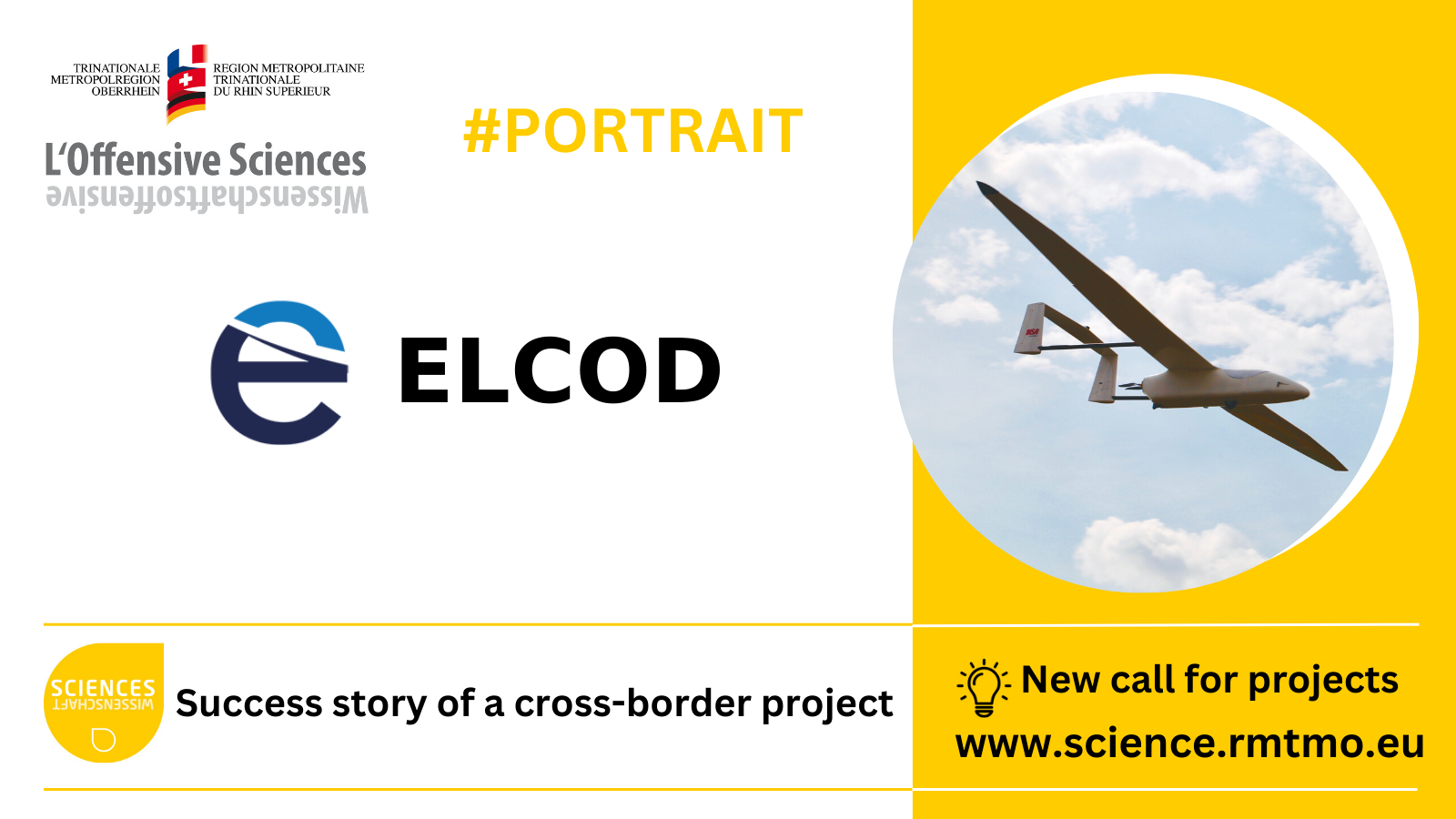Measuring air pollution over a wide area, monitoring high-risk areas, inspecting railway infrastructures… these operations are generally carried out by aircraft with pilots, and are therefore very costly. The ambition of the ELCOD consortium was to offer a more economical and environmentally friendly solution by developing long-endurance autonomous drones. Renaud Kiefer, assistant professor at INSA Strasbourg, together with Thomas Pavot and Martin Lefebvre, PhD students, designed the “Stork” drone, which will eventually be able to carry a 5-kilogram payload over a distance of about 500 km.
The long-endurance autonomous drone, a solution to reduce the cost and carbon footprint of a wide range of missions
In June and July 2022, a plane carrying numerous scientific instruments flew over the Paris region at low altitude to study the city’s pollution plume at different distances. This CNRS flying laboratory made 13 flights, for a total of 50 hours. This type of operation allows a large amount of data to be collected, but is very expensive. The drone represents a solution for studying air pollution: by carrying sensors over a long flight time, a drone could make it possible to carry out analyses of air composition in a more economical and ecological way.
In the Upper Rhine region, long-endurance drones would be particularly useful for a variety of operations: observation of the Rhine, border surveillance, fire monitoring and airborne measurement, data collection for crop optimization, etc. Many applications could benefit from long-range drone technology.
A fuel cell and a biomaterial made of flax fibers for a high-performance, eco-designed drone
The INSA Strasbourg team has designed the “Stork” drone, capable of transporting small loads over very long distances. It looks like a glider and was named after the migratory bird, emblem of Alsace. Renaud Kiefer and his team worked on the sizing of the drone, the design of the prototype, the integration of air quality and pollution sensors (in partnership with the ICPEES laboratory of the CNRS) and the study of the feasibility of innovative solutions. The team also collaborated with the Hochschule Offenburg for the development of this project.
The “Stork” drone is based on two innovations: a hybrid energy source incorporating a fuel cell and a composite biomaterial made of flax fibers. Thomas Pavot worked on the energy hybridisation, combining a fuel cell, a lithium polymer battery and a supercapacitor. “The fuel cell will provide long endurance, but it is not capable of providing peak power. For the supercapacitor, it’s the opposite. The idea is to create an ideal hybrid source, which will have the advantages of both,” explains Thomas Pavot. Converters are used to link these components and ensure the overall functioning of the system. “The aim of my PhD thesis is to develop an energy management algorithm to control the converters, so as to choose how to distribute the energy between the three sources in order to maximise autonomy,” explains the doctoral student. In addition to the energy aspects, the “Stork” drone also stands out from a mechanical point of view. Martin Lefebvre carried out a theoretical study on the performance of flax fibers as part of his thesis. “Martin calculated the number of layers of fabric that must be put in place to design a wing made of biosourced composite materials based on flax fibers and recyclable resin, and compared its characteristics with materials based on glass fibers and epoxy. The mechanical performance is similar, but flax absorbs vibrations better,” notes Renaud Kiefer. This biomaterial could therefore replace the current petroleum-based materials.
The future of the “Stork” drone: partnerships and several avenues for improvement
A new project will be submitted to take over from ELCOD. One of the next steps will be to integrate the hybrid energy source into the drone, whose fuselage has been designed around the fuel cell and its tank. “A second aspect will concern the measurement of pollution. The drone can track a smoke cloud to assess the pollution generated by fires (forests or industrial sites), automatically adapting its trajectory according to the data collected by the sensors. The drone needs to stay on the edge of the cloud, not in the middle of it, to avoid saturating the sensors” explains Renaud Kiefer. Partnerships have already been established with the French fire fighters (SIS 67) and the German Feuerwehr, as well as with ATMO Grand Est and its German and Swiss counterparts.
Several improvements are being considered to make the drone even more environmentally friendly. “Solar panels could be added to the wings. Over the surface of the drone, we can gain a maximum of 100 watts, which could be a plus to power the electronics and to save flight time. We consume 400 watts at cruising speed, so this is a significant contribution,” says Renaud Kiefer. “It is also possible to optimise flight time by exploiting thermal columns in an autonomous way. The drone enters the thermal by itself. As “Stork” has a glider-like wing, this is a way to gain altitude while saving electrical energy”. This will make this new type of “Stork” even more efficient.
The ELCOD project (“Endurance Low COst Drone”) initiated in April 2017 and ended in December 2020. Co-funded by the European Union under the Interreg V Upper Rhine programme and by the French and German regional partners of the “Science Offensive” initiative, it brought together three academic partners: Hochschule Offenburg, INSA Strasbourg and CNRS. Various industrial partners also took part in the project. The Science Offensive: Based on its success, the initiative is to be continued for the period 2021-2027, for which two calls for projects are planned. Building on the dynamism of cross-border scientific cooperation, the co-financing partners of the Science Offensive now want to support the transfer and exploitation of the results of public research and strengthen the positive effect of scientific findings on businesses and society, for the benefit of the economic, social and ecological development of the Upper Rhine Trinational Metropolitan Region. The fourth call for projects of the Science Offensive has been launched on January 5th 2023 (closing date: 24th of March 2023) and focuses on knowledge and technology transfer while contributing to the objectives of the Trinational Metropolitan Region of the Upper Rhine. You can find all informations on the Science Offensive on the Website of the Science Pillar.
